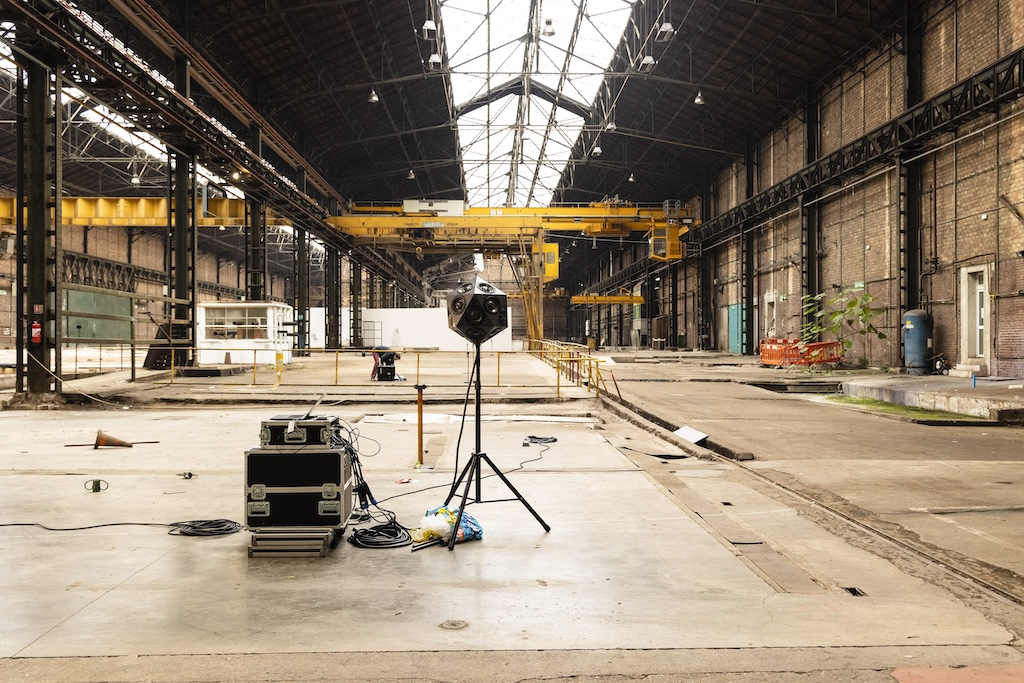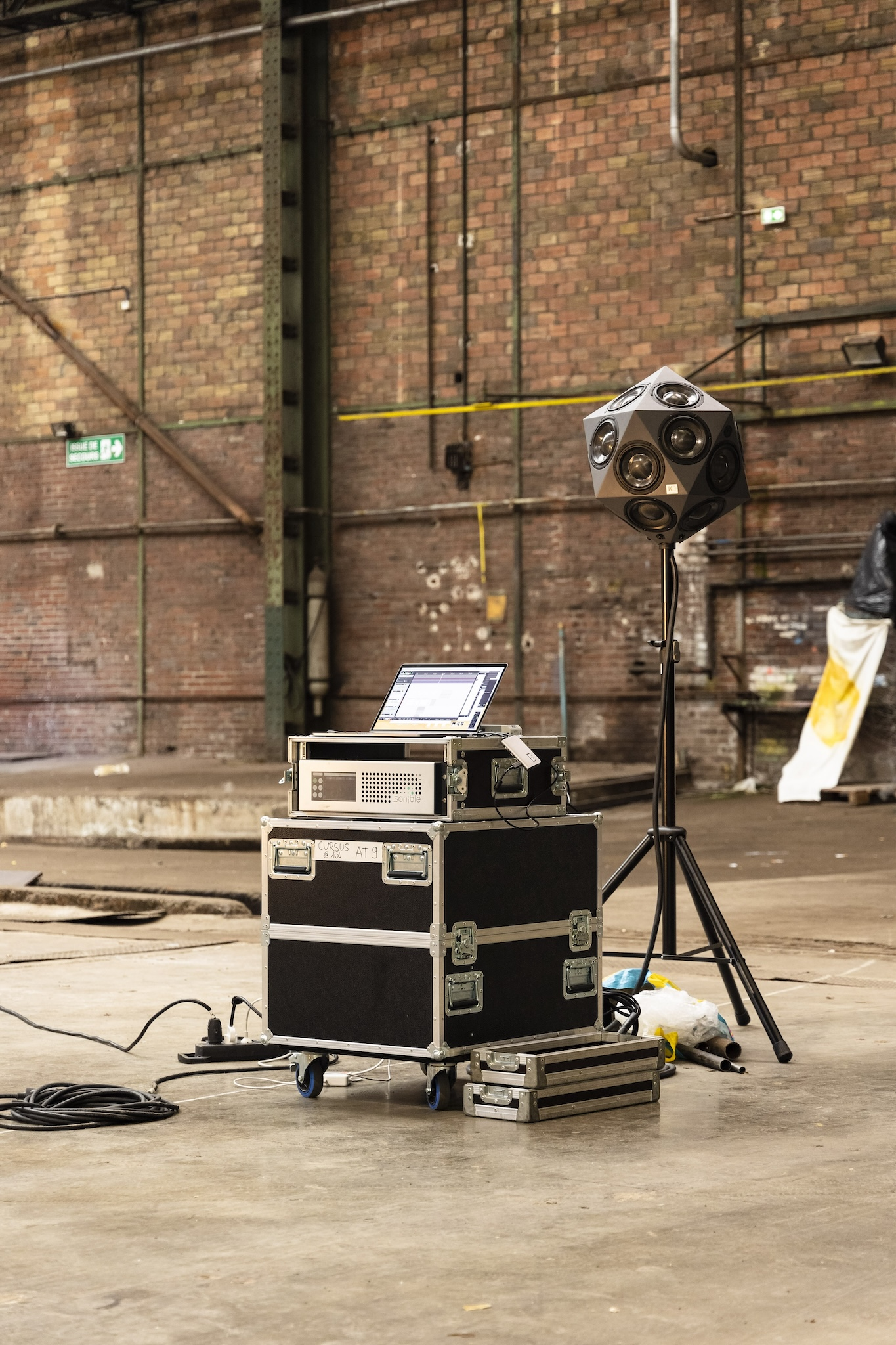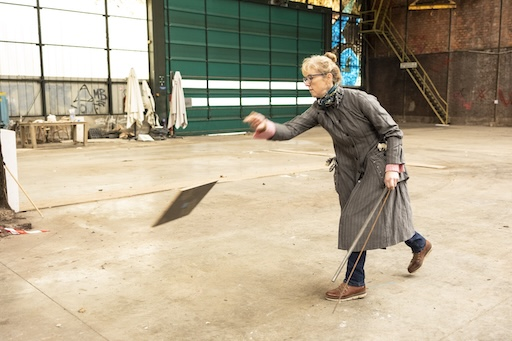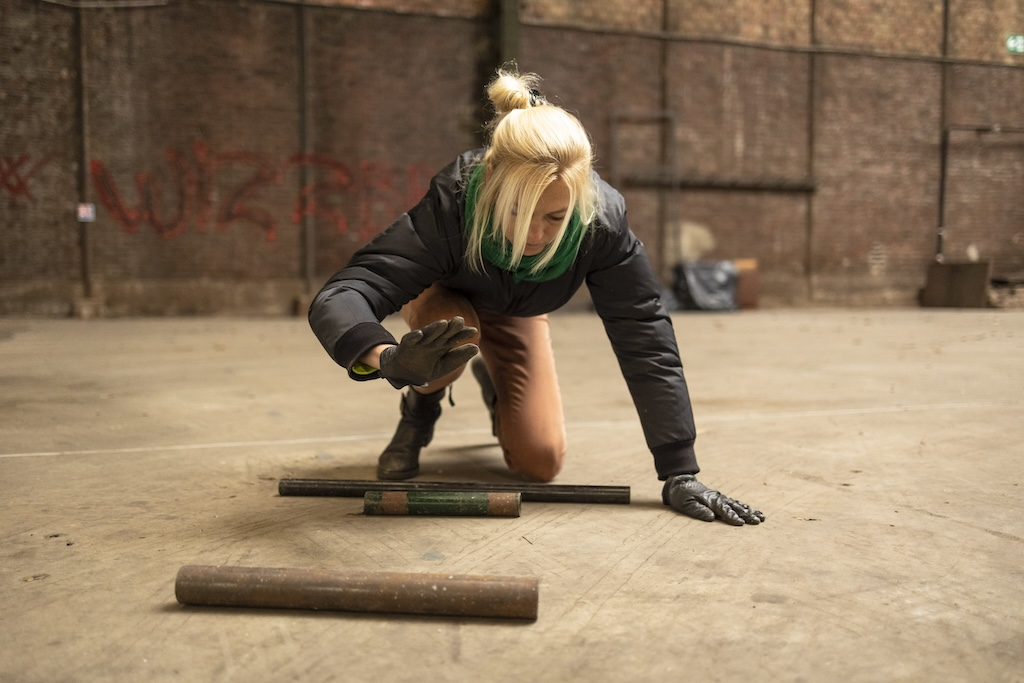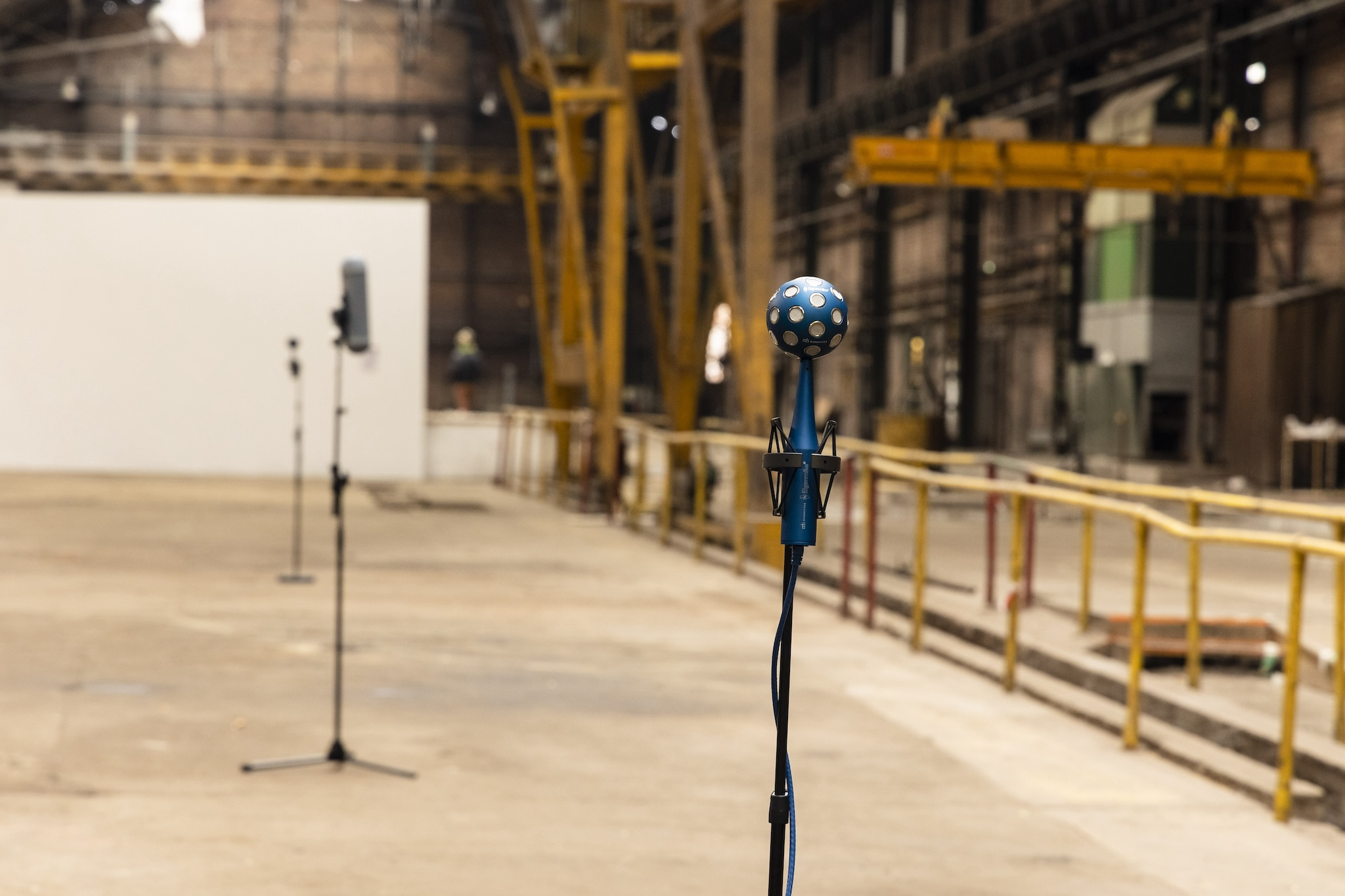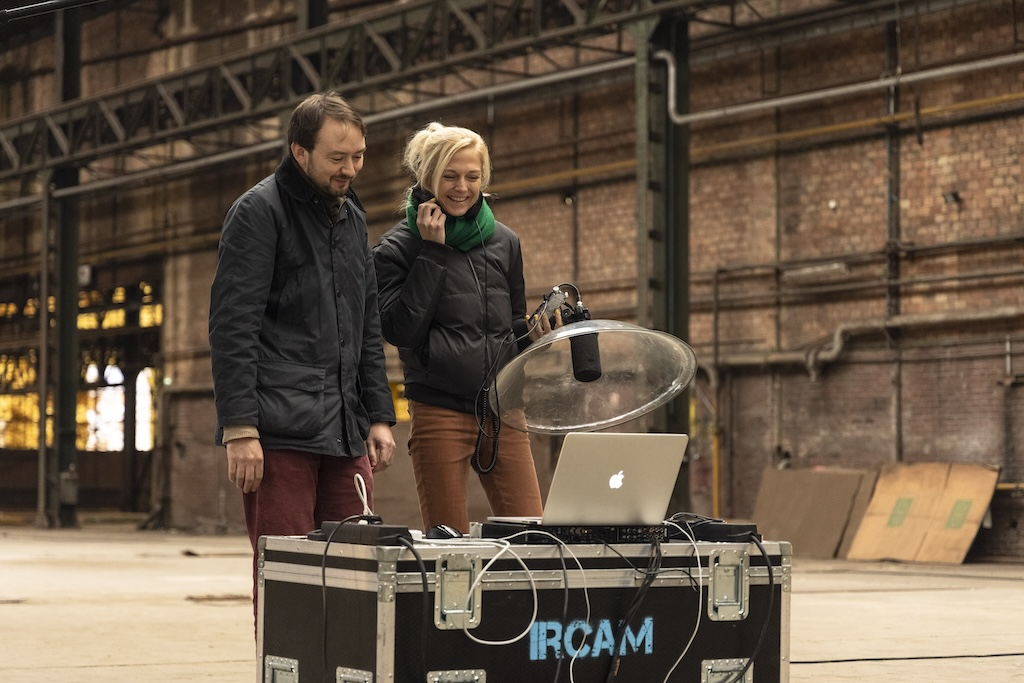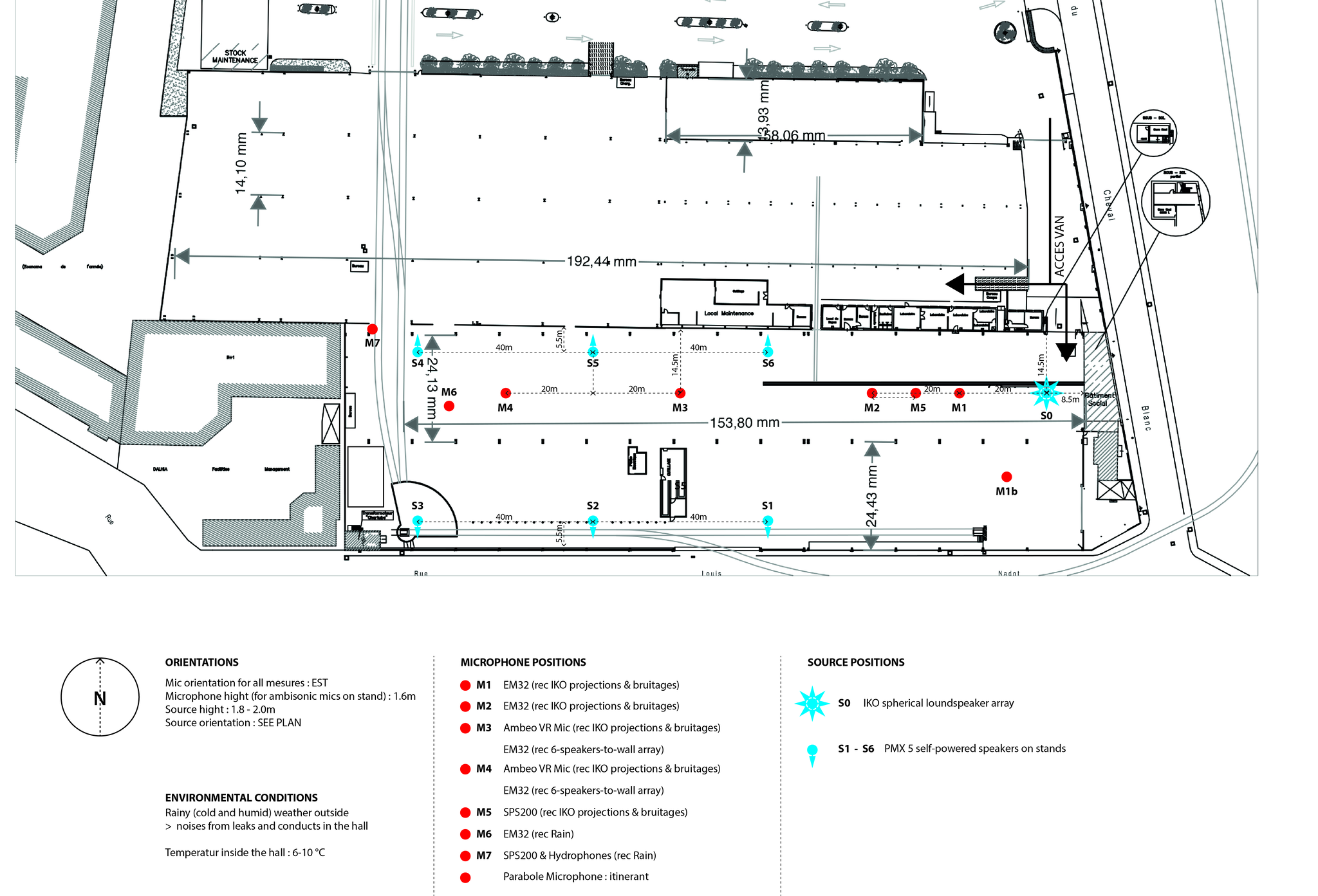The sound material used during the workshop was produced and collected during an initial two-day residency at the Grandes-Serres, the historic site of the Pouchard factories (transformation of steel tubes) located in Pantin, in the North of Paris, along the banks of Canal de l’Ourcq. While the industrial hangars are awaiting their transformation into a carefully planned new urban hub, they accommodate artistic production and cultural events.
All photo credits unless otherwise stated: Philippe Barbosa
Figure 1: IKO
1. Playback of Ambisonic materials on the IKO:
The IKO utilises beam-forming to create spatial audio images. It reveals the spatial topography of the place by projecting sound beams that reflect from the surrounding surfaces. With this tool, we were able to focus and design beams and fields of sound to activate specific sections of the space, such as the more focused reflections in the area where the loudspeaker was located.
Figure 2: Distributed PMX5 loudspeaker array
2. Playback of Ambisonic materials over a distributed six channel array:
Six PMX5 speakers were spread widely around the perimeter towards the top end of the space. The speakers were pointed towards the brick walls so that the direct sound diffused as it reflected off these surfaces. The sounds played over this loudspeaker array consisted of both decoded ambisonics sources and single channels of materials we had prepared before arrival. The result was a highly reverberant and distant sound field
1. Double EM32 eigenmike
The EM32 captures 4th order ambisonic signals offering high spatial resolution (but with some losses in richness of frequency response). By synchronising two em32 microphones we were able to capture two different spatial images and acoustic responses in parallel. This allowed for spatial trajectories to be captured across the complete span of the hall, and sounds appearing both near and far.
2. Soundfield SPS200 + Sennheiser Ambeo
The SPS200 and Ambeo are first order microphones, with less spatial resolution than the EM32, but with a slightly better high frequency response and signal to noise ratio. Also, as the microphones are physically smaller and less fragile they can be deployed in alternative ways to the EM32.
